Time's Up - The Hunt is On
The Captain was Correct
The System
Radar Intel Not Used
Bismark vs. the Hood
- There are many interesting features, some of which I can recount from personal experience, some only from accounts from fellow officers, as I was in an enclosed office and did not see the Bismarck. A good friend of mine was a HA Director Control Officer and he watched the engagement from his station. Since he was not being used at this particular time for that range, he watched five salvoes of Bismarck’s fall off short; the first was roughly a hundred yards beyond the Hood, the second was a straddle of Hood, with the third he saw a fire occur on Hood, the fourth he did not detect and on the fifth Hood blew, just exploded. Bits of her fell on our deck. He watched the foretop, the whole mast structure, go hurtling through the air for a great distance. Only three survivors were picked up by escorting ships.
| . | By Citypeek - Own work based upon the map Rheinuebung Karte2.png, CC BY-SA 3.0, https://commons.wikimedia.org/w/index.php?curid=25610223 | . |
Bismark vs. the Prince of Wales
| Here the fallacy of our Admiral is indicated, as far as I am concerned. The range for Prince of Wales was almost identical with Hood, and Bismarck was able immediately to turn her fire on us, causing severe damage. Our whole compass platform was shot away and of the ten or so personnel normally stationed on the Compass Platform, seven were killed; the three most important people surviving, the Captain, the Navigator and the Cox’n. A number of our Air Defence people were killed. |
Interesting Aside
| An interesting story is that Esmond Knight, the actor, was an RNR lieutenant who was a shipmate and was an Air Defence Officer. He was seriously injured, losing one eye and badly damaging the second. Several days later we dropped him off at Iceland thinking he would not live. Many years later he appeared in many shows including ‘Henry the Eighth; and he was the actor who portrayed the Captain of the Prince of Wales in the movie ‘Sink the Bismarck’. The Prince of Wales continued to engage the Bismarck for twenty minutes before our Y turret seized by jamming of the loading trays so that the turret could not be trained. We did manage to fire a good number of rounds at Bismarck and subsequently found through other accounts that damage was done to Bismarck, seriously disrupting her control of armament. |
Blood Dripping on Navigational Chart
What the Radar Saw
Extensive Damage was Done
Y Turret Trays Jammed
At 4:00 We Engaged the Bismark
When we engaged Bismarck, she replied, but not at us. She seemed to aim at either Norfolk or Suffolk, one of the escorting cruisers, I forget which. And her fall of shot was well off target. This led us to believe that she had trouble with her fire control. We were proceeding with this engagement when we were suddenly directed to disengage in order that a flight of torpedo bombers from the aircraft carrier Victorious (I’m not sure where she was) might attack. We disengaged and watched some twelve, fifteen, eighteen Swordfish carry out a torpedo attack on the Bismarck with fatal results to them, not to Bismarck. I don’t believe any damage occurred to her from the results of that attack.
The Weather Worsened
Not a Happy Memory
R & R and Another Canadian
During the time we underwent damage repairs, I got a type 273 radar, a warning set of ten centimeters wavelength. The antennas were well up the foremast and the equipment was directly under them in a housing about the office It was maybe ninety to a hundred feet above water level.
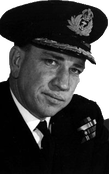
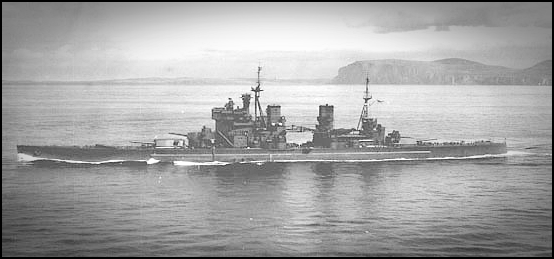
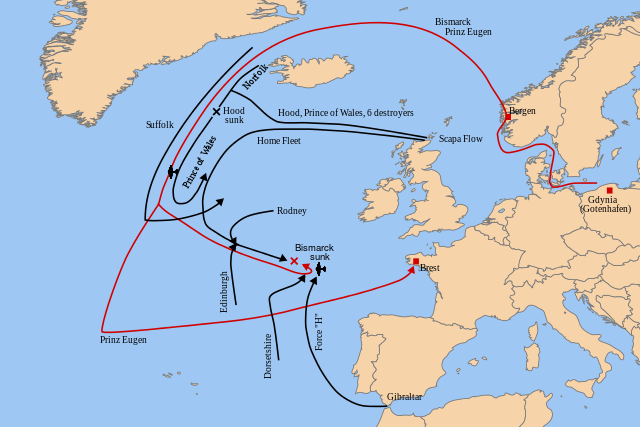
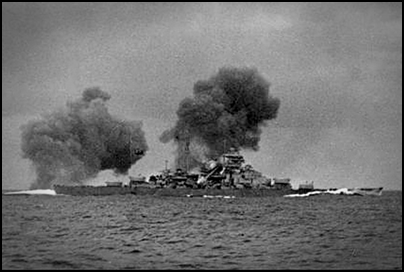

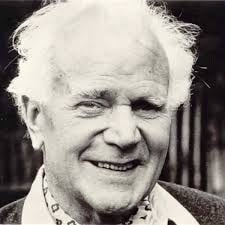
 RSS Feed
RSS Feed